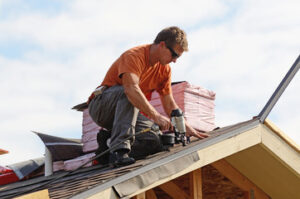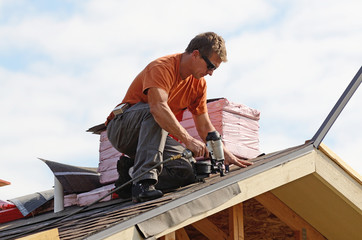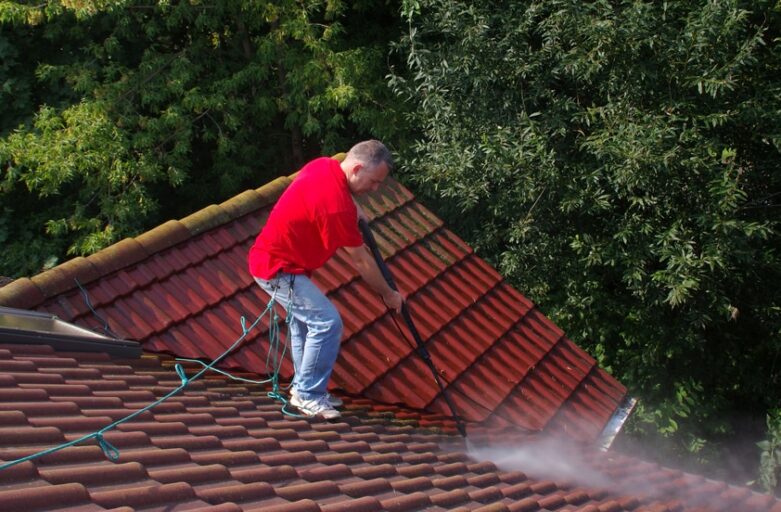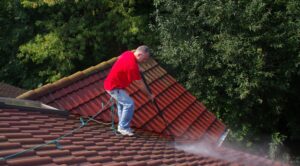Orlando Roofing Companies provides services related to the repair and installation of roofs. They are typically licensed contractors and provide warranties for their work.
Choosing the right contractor will make all the difference. Whether your roofing project is big or small, finding the best fit for you is important.

Roofing companies have years of experience dealing with different types of roofs. This means they can quickly assess a situation and offer their customers the best solution. They also know how to handle unexpected problems during a re-roofing project. Moreover, they have the knowledge and skills to ensure the job is completed on time and within budget.
Another benefit of hiring a roofing company is that they can install proper insulation. This will help keep the house cooler in summer and warmer in winter, making the home more resistant to water damage. Furthermore, roofing contractors can install gutters, windows, siding, and more, providing their customers with a complete home improvement package.
When selecting a roofing company, look for an established online presence. This will allow you to verify that they are legitimate and can be trusted. You can do this by searching for the roofing company name on Google. If they have an established website, it should appear on the first page of results and will have some links from other online sources that Google recognizes.
Finally, a reputable roofing company will be willing to provide references from previous clients. This is a good way to see past customers’ happiness with their work and service.
Roofing companies have unique insurance needs because of the demanding nature of their work. Several types of insurance are important for the business, including general liability, commercial auto, and workers’ compensation. The company can also consider surety bonds and professional indemnity insurance to protect itself from claims of errors or omissions. In addition, the company can save on premiums by implementing safety programs and paying its bills in advance.
General liability insurance is important for roofing businesses because it helps pay for damages caused by a third party. This policy can cover issues like property damage, injuries, and advertising infringement. Depending on the policy, it can also help pay for legal fees and judgments awarded against the business. Additionally, this coverage can help pay for repairs or replacement costs if an employee is injured at the job site.
Workers’ compensation insurance is important for roofers because it pays medical expenses and disability benefits if an employee is hurt. This type of coverage is required by law in most states, so it’s important to have this protection for your employees. In addition, you should have commercial auto insurance to cover the cars and trucks your employees use for business purposes.
Roofing contractors should also consider inland marine insurance to protect equipment and supplies transported between locations. This type of coverage will protect against theft, damage, and loss while the items are in transit. This is especially important for companies that need to ship high-value equipment regularly. Inland marine insurance is also good for roofing companies that lease or borrow equipment from others. This way, they can protect their investments from theft or natural disasters. Inland marine policies can be purchased separately or as part of a business owner’s policy. A business owner’s policy is a great option for small roofing companies because it bundles three essential coverage types into one. This is a great way to save money on the cost of individual policies.
As with any business, a roofing company needs good customer service. This can be proven by their customer testimonials and how they communicate with customers online. A company that takes the time to create a beautiful and user-friendly website shows they are committed to their customer’s experiences.
In addition, a roofer should have a strong social media presence with an active and engaging Facebook page and a well-written blog that provides helpful tips and insights to homeowners. This helps establish a rapport with prospective clients, essential in building trust and encouraging them to book services with your company.
Lastly, a roofing contractor should be licensed and insured and have a reputation for good work. They should also be willing to answer questions and concerns promptly. If a problem arises, a good roofing company will respond gracefully and try to rectify the situation.
The best way to find a great roofing contractor is to ask for referrals from people you know who’ve recently used their services. They’ll often provide a personal connection and give you the benefit of their first-hand experience. Moreover, they’ll likely offer quality service because they have a relationship with you and a sense of responsibility.
Many prospective home improvement contractors start their search by using local directories and review sites. Those sites help them connect with various home service providers in their area. To stand out from the competition, roofing companies should be active on these platforms and regularly check what other customers say about them.
Which displays their Google ratings on their website and also offers two options to contact them: call or text. The latter feature is ideal for people who want to avoid initiating a phone conversation, and it shows that the company has considered its target audience’s preferences.
Finally, a great roofing company should have an efficient workflow and effective marketing strategies. They’ll use tools like Jobber to manage their jobs, track project progress, and invoice clients quickly. They’ll also use SalesRabbit to generate leads and guide quality prospects through their sales funnel. These tools and strategies will help them save valuable time while ensuring they get the most out of their roofing business.
The best local roofers will have a solid reputation and always look for new ways to impress their clients. They will ensure the job is done properly and only consider it finished once they meet or exceed your expectations. A national or out-of-town company may be less invested in its reputation and is more likely to cut corners to save money.
Often, local roofers will be willing to work with you on the price of your project. This can save you a lot of money in the long run and allow you to fix your roof even with limited cash. Local roofers will also be more willing to work with you on your insurance claim and can give you a better estimate of the costs involved.
Choosing a local roofing company that is licensed and insured is important. This will protect you against fraudulent companies and ensure the work is completed safely. Also, check the contractor’s physical address and phone number. A local address is a good sign that the company is legitimate and that you are dealing with an actual roofer instead of a salesperson.
Roofers perform roof-related services, including installation, repair, inspections, and replacement. They work on residential and commercial properties and can install many roofing materials, including asphalt shingles, flat roofs, metal roofs, tile, etc. Some also specialize in other exterior home improvements, such as siding and window replacement.
Those who work in the roofing industry often enjoy working outdoors and being physically active. However, the job can be challenging because it involves working at heights and dealing with heavy tools. Many roofers must attend specific training courses and undergo on-the-job training to learn the necessary skills. They also need to understand and adhere to the safety rules set by their employers.
A professional roofer can help ensure the structural integrity and durability of a building’s roof and provide expert advice about its maintenance. They can also inspect the condition of a roof and identify any potential problems, such as leaks or insect infestations. They can then recommend the best course of action to take.
The most common service provided by roofers is repairing or replacing damaged roofs. This type of roofing requires specialized knowledge of different materials and techniques, such as nailing, flashing, and ventilation. Roofers can also use various tools and equipment, such as power, ladders, scaffolding, and safety gear, to complete their work.
Roof leaks are a serious problem that can cause water damage to drywall, wood framing, and other areas of the structure. They can also lead to toxic mold in hidden places, costing property owners a lot of money. Professional roofers can isolate the source of a leak by examining internal water damage and tracing it to the external part of the roof.
When choosing a roofer, it’s important to consider their reputation and experience. A good roofer will have a strong track record and be licensed and insured. They will also be able to give you a fair price estimate and work within your budget. Generally, they will offer high-quality products, warranties, and comprehensive insurance coverage.
When storms hit, they can cause a lot of damage. Many homeowners may have to hire roofers to repair the harm caused by heavy winds, lightning, rain, or hail. These businesses are called “storm chasers.” They follow severe weather, seeking out areas with a lot of damage. These contractors usually work directly with the homeowner’s insurance company.


